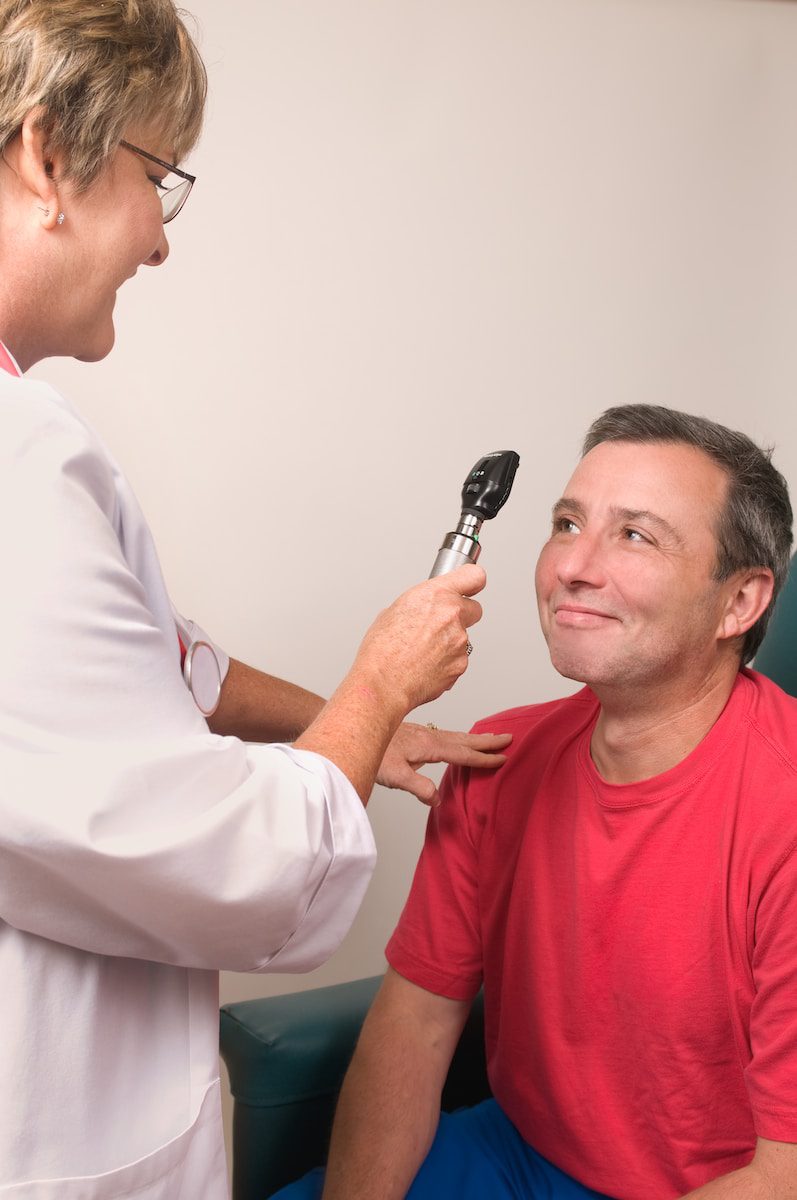
Most eye doctors require appointments, so call ahead at any Whylie Eye Care Center location to schedule a time. Plan on the exam taking at least 30 minutes. Be sure to specify when you call for the appointment if you also would like an exam for contact lenses, as this may take a bit more time.
Plan to come 10 minutes before your appointment to complete your health history forms. The receptionist will provide forms that ask about your medical history, including a list of your medications, as some may affect your eyesight.
After completing your medical history forms, you’ll be escorted back to the doctor's office. The doctor will review your health history with you and discuss any problems you may be having with your vision. The doctor will then take several steps to assess your eye vision and health.
After the exam is complete, the doctor will discuss the results with you and they will provide you with a prescription for eyeglasses. If any problems are discovered, they will walk you through the solutions and next steps.
The next step is the fun part where you select your eyeglass frames. The professional optical dispensers at each Whylie Eye Care location can help you select the frame, lens and coating if you so desire. The team at Whylies will be sure your selection works with your prescription and will assist with any insurance should that be applicable. In a few days, you will receive a text that your glasses are ready. When you come to pick them up they will fit them so they sit evenly and firmly. Learn about our eyeglasses brands.
This is a simple procedure that helps the doctor determine how well your eyes are working together. The doctor will ask you to cover one eye with a small paddle and will ask you to focus on a particular portion of an eye chart. The doctor will observe how much your eyes move as you look at the object. This will be done for both eyes. The test helps determine if you may have lazy eye, poor depth perception or binocular vision problems.
This is an easy procedure where you place your chin on a chin rest in a darkened room. The doctor looks through a binocular microscope and shines a light into your eye to look at the structure of your eye. This gives the doctor a magnified view of your eyelids, cornea, iris and the inside of the eye.
This painless test measures pressure in your eyes. Raised intraocular pressure indicates the potential for glaucoma, which is where raised pressure causes damage to the optic nerve that connects the eye to the brain. The doctor places an anesthetic numbing drop in both eyes, and then has you place your chin on a rest. The doctor then uses an instrument called a tonometer that gently touches the cornea to measure your eye pressure. When identified early, glaucoma can be effectively treated.
This is an optional procedure but the older you are, the more important it is. Ask when you make an appointment if this will be necessary as you will need someone to drive you home as your eyes will be extremely light sensitive.
Dilation allows a better view of the structures in your eye, especially if an abnormality is possible. The doctor places special drops in your eyes that will dilate your pupils (make them larger). After waiting at least 15 minutes for optimal dilation, the doctor continues to examine the structure of your eyes.
Because dilated pupils make your eyes highly sensitive to light, you should make sure you have sunglasses with you. It is also desirable to have someone drive you home if you have the dilation procedure.
This is the test most people associate with taking an eye exam. It employs a letter chart along with a device called a phoropter, which is placed in front of both eyes with varying lens powers on dials. The doctor has you look through one side and read a specific line of the chart, and will flip between lenses asking you which helps you see better. This will be repeated several times with each eye and different lenses until the doctor determines your best prescription.